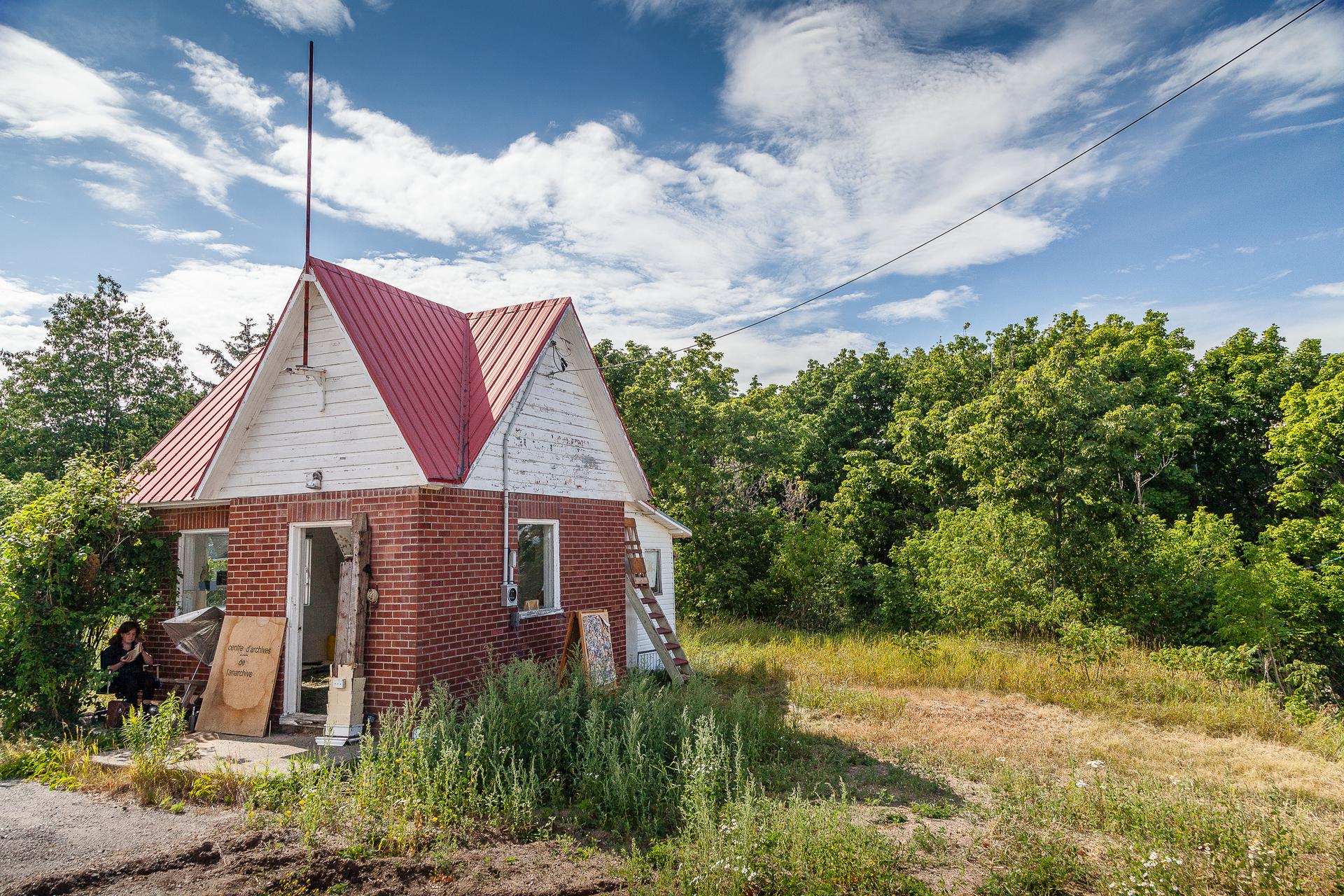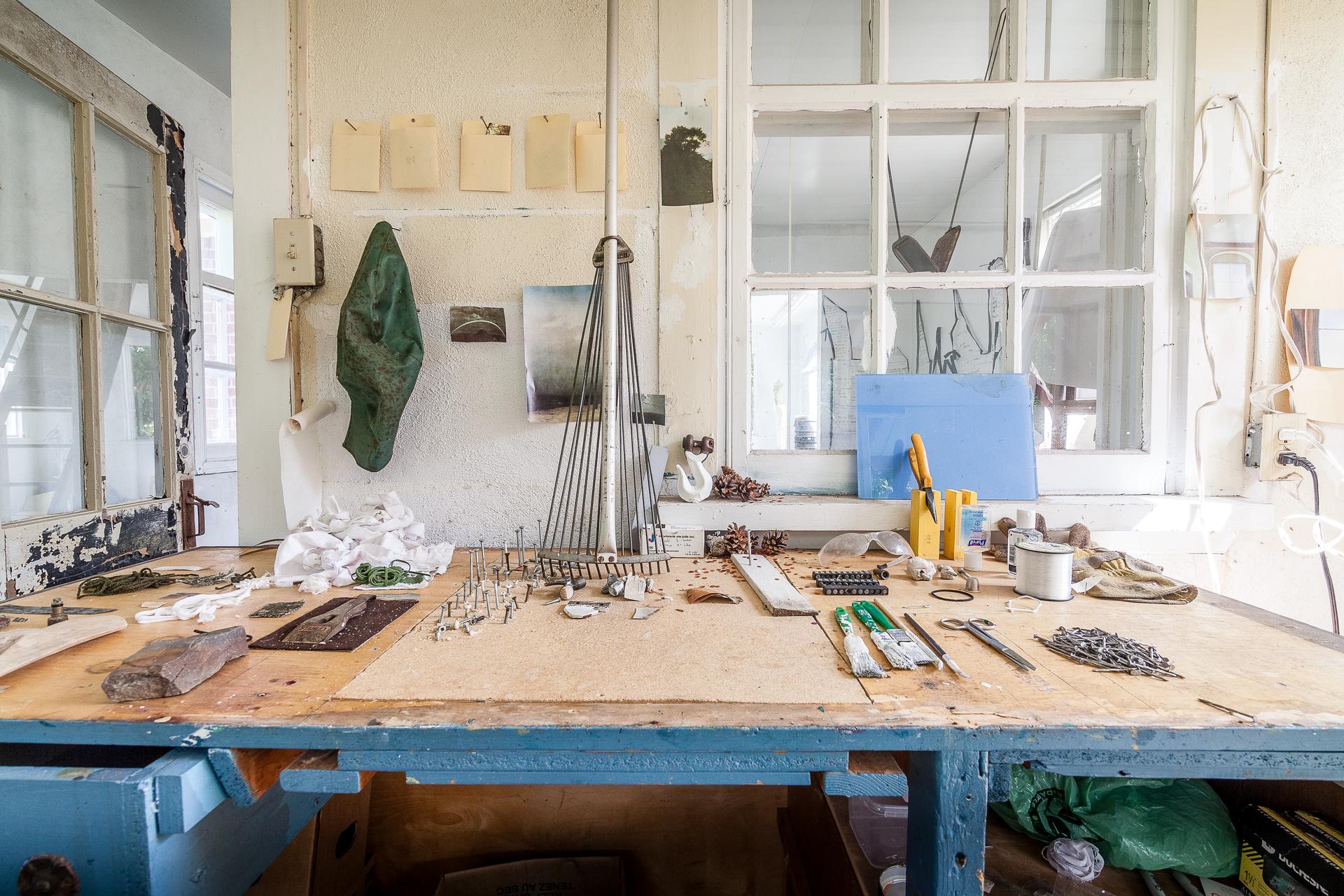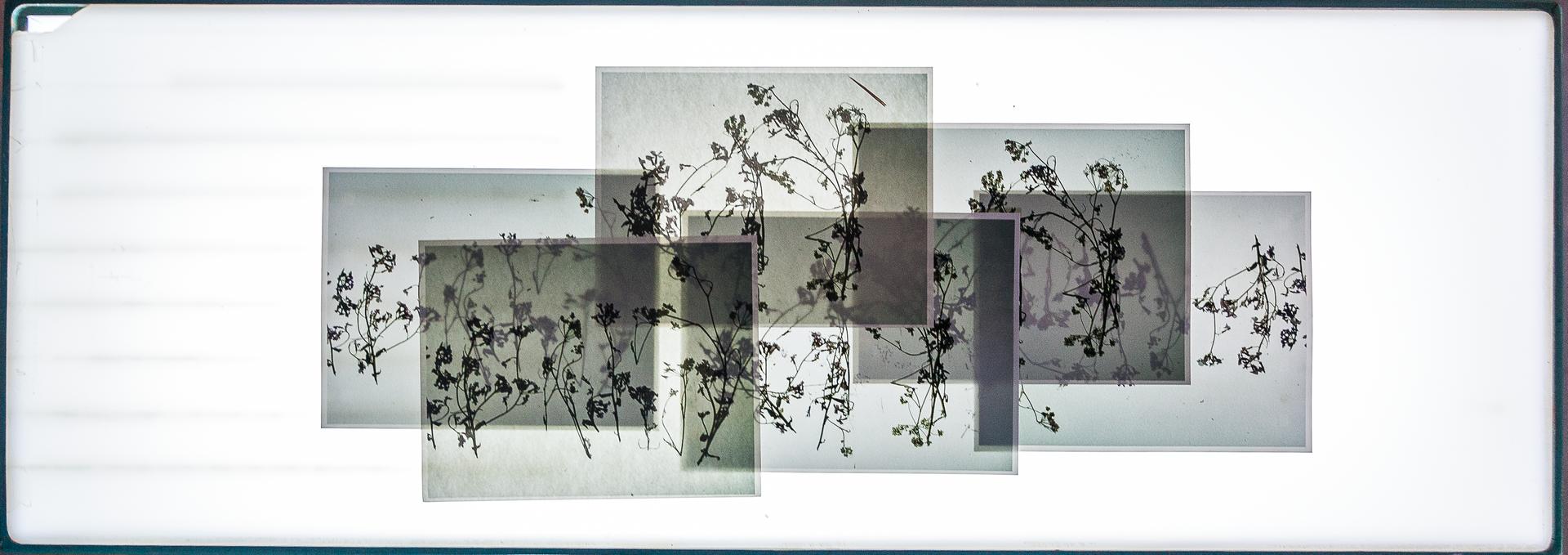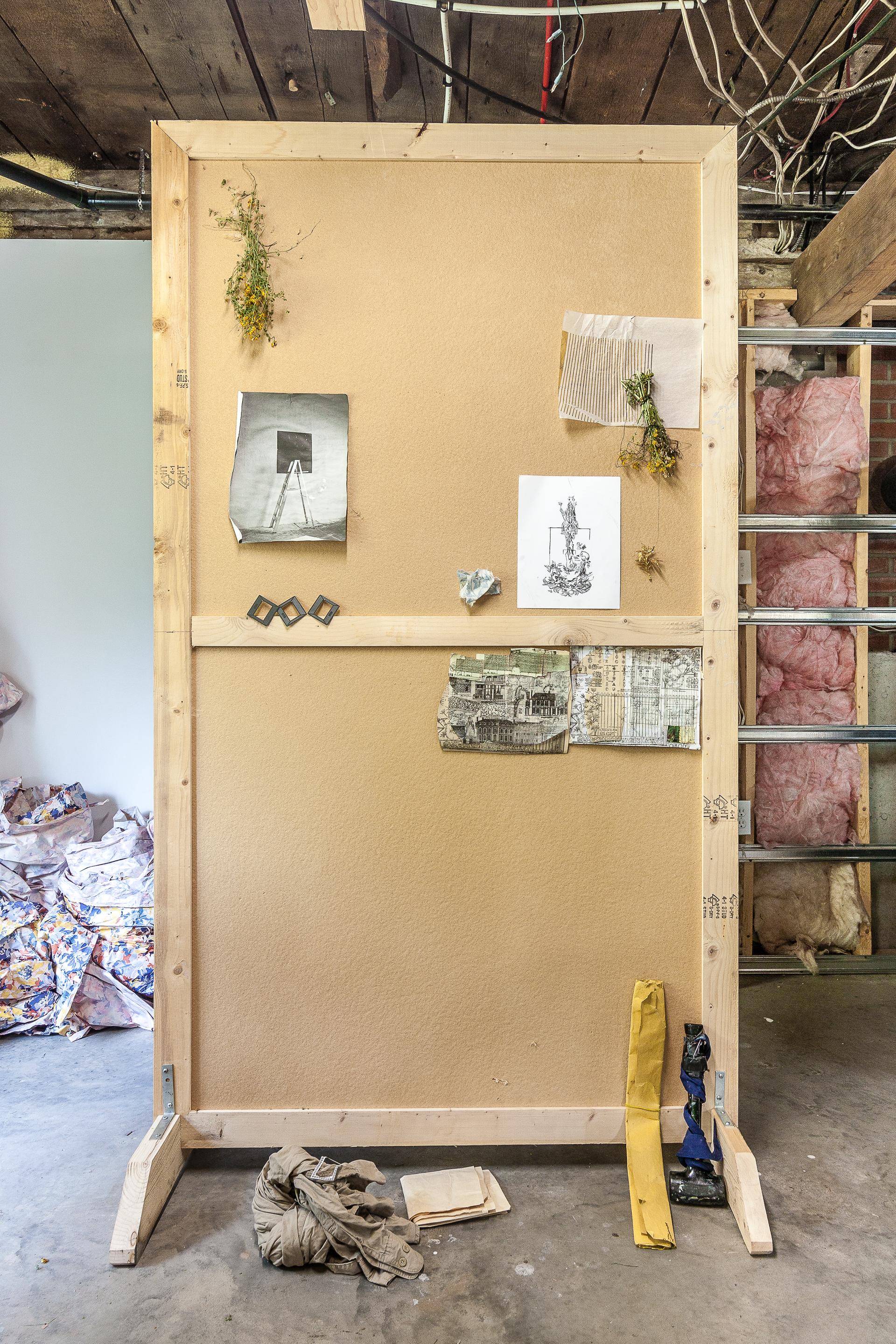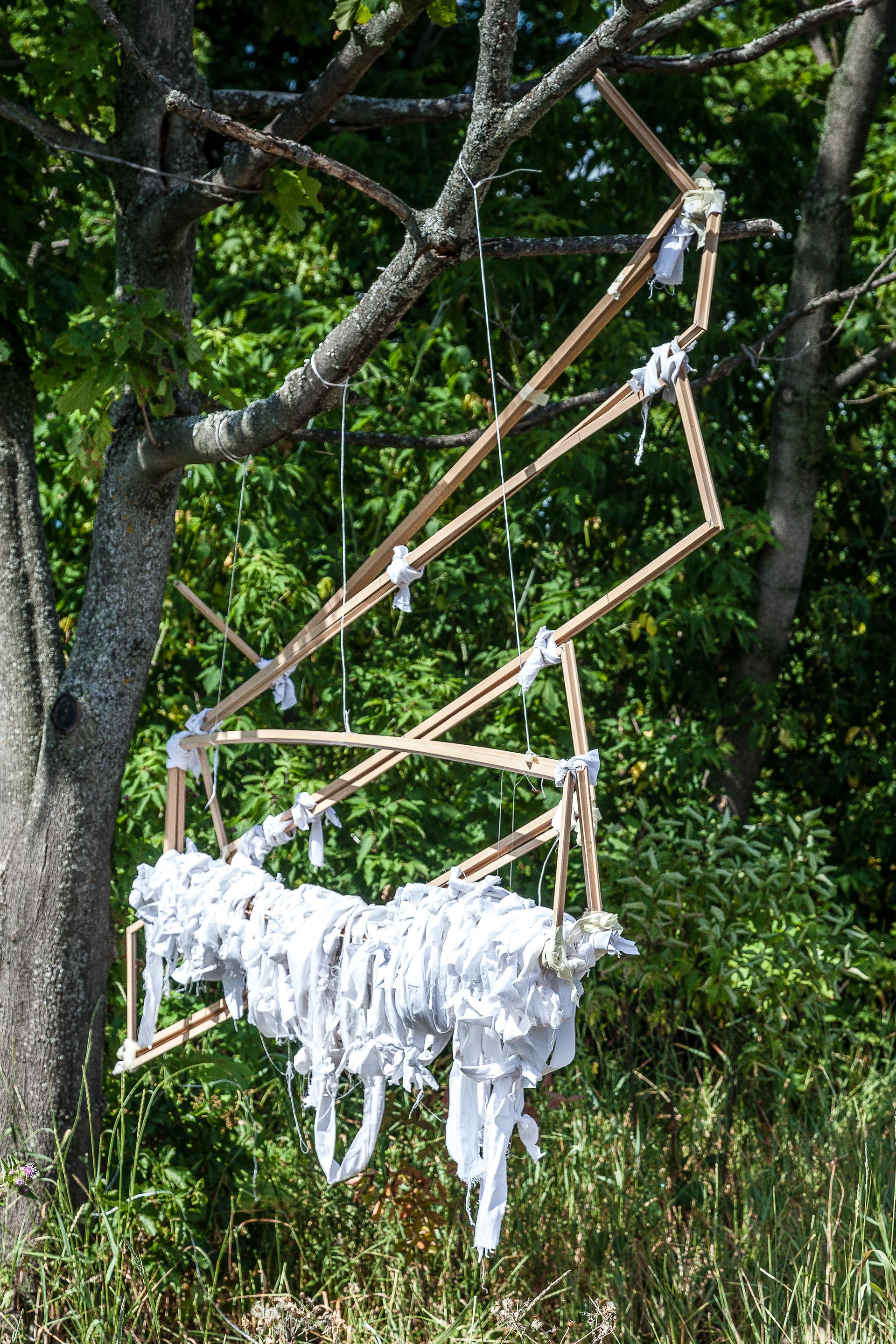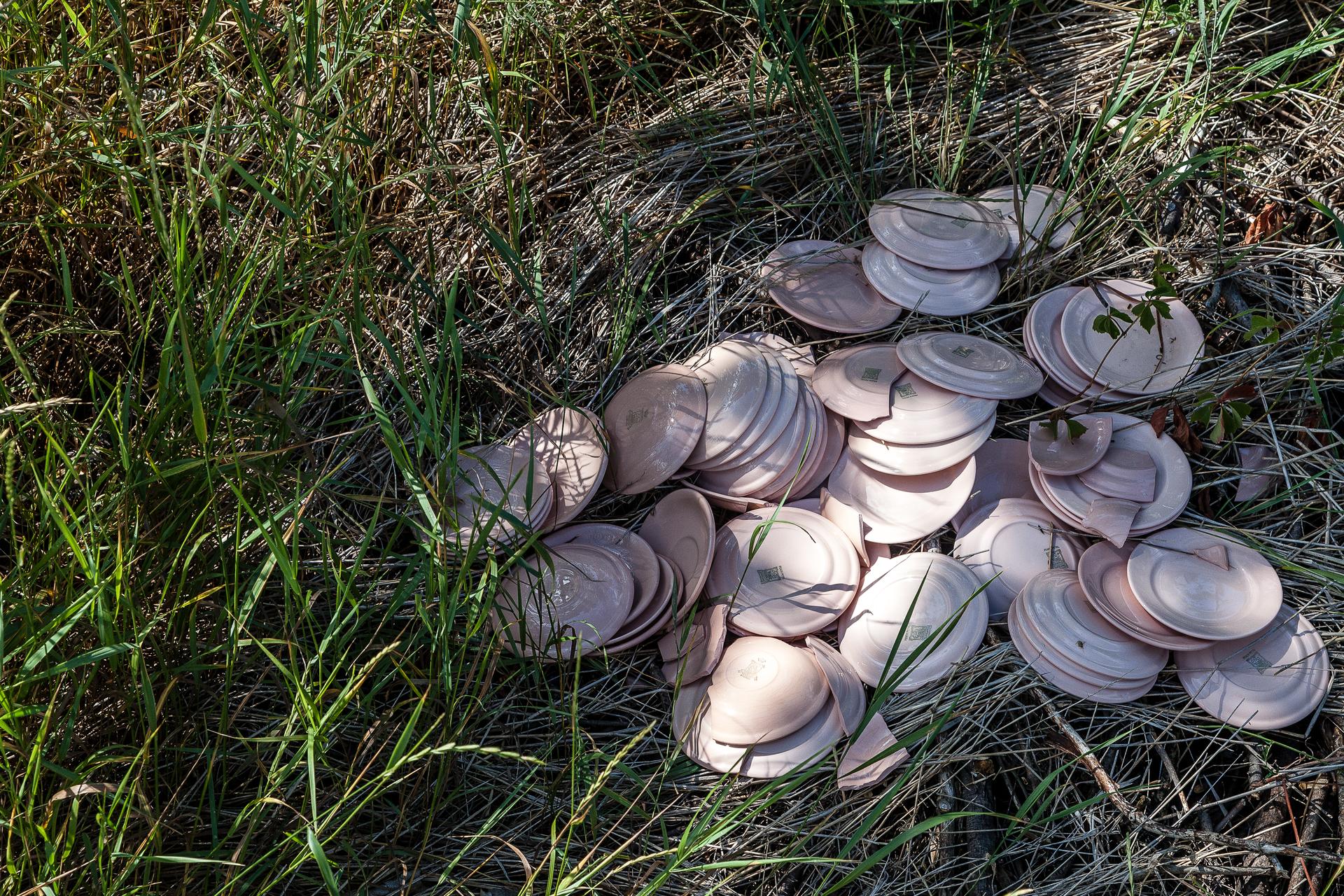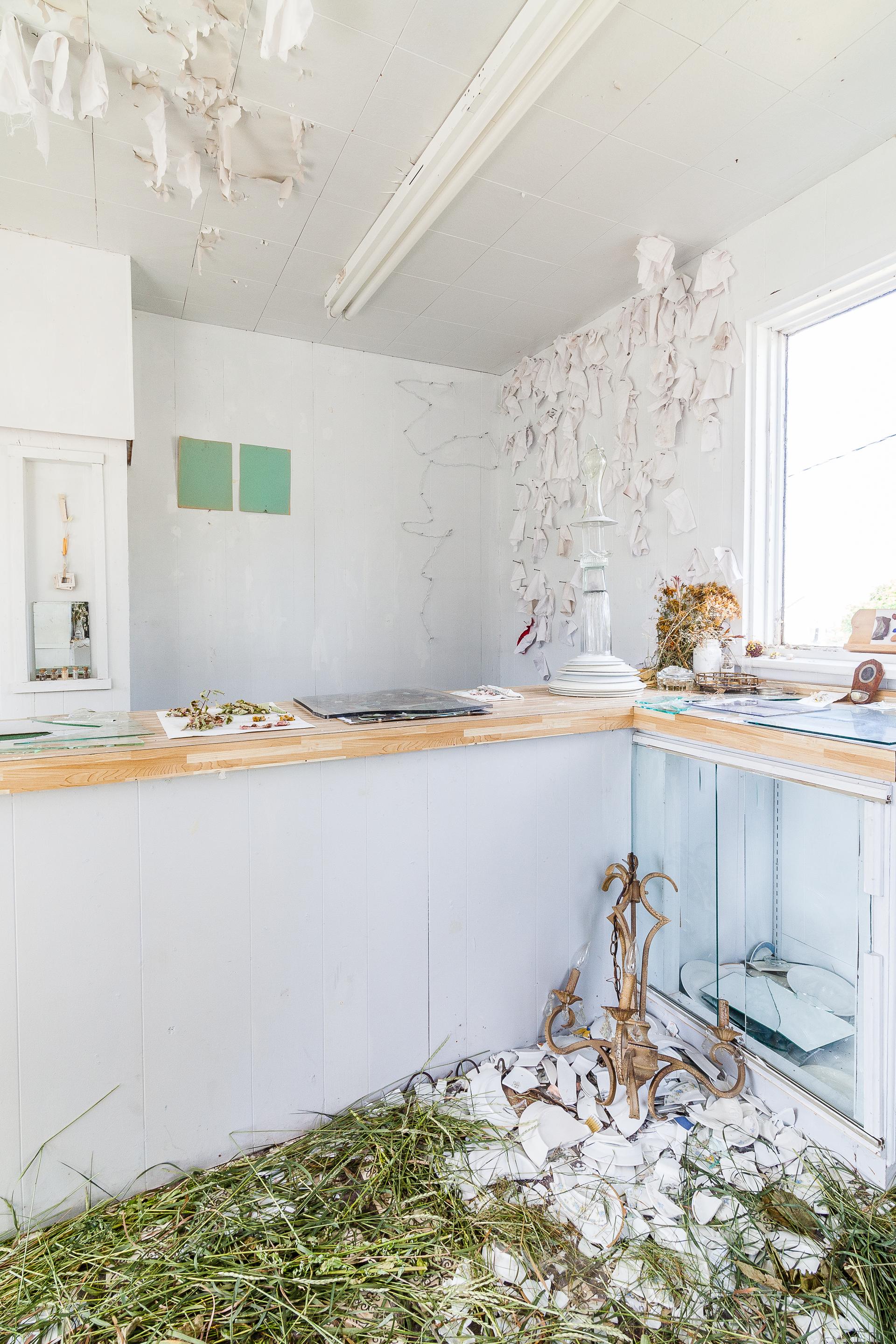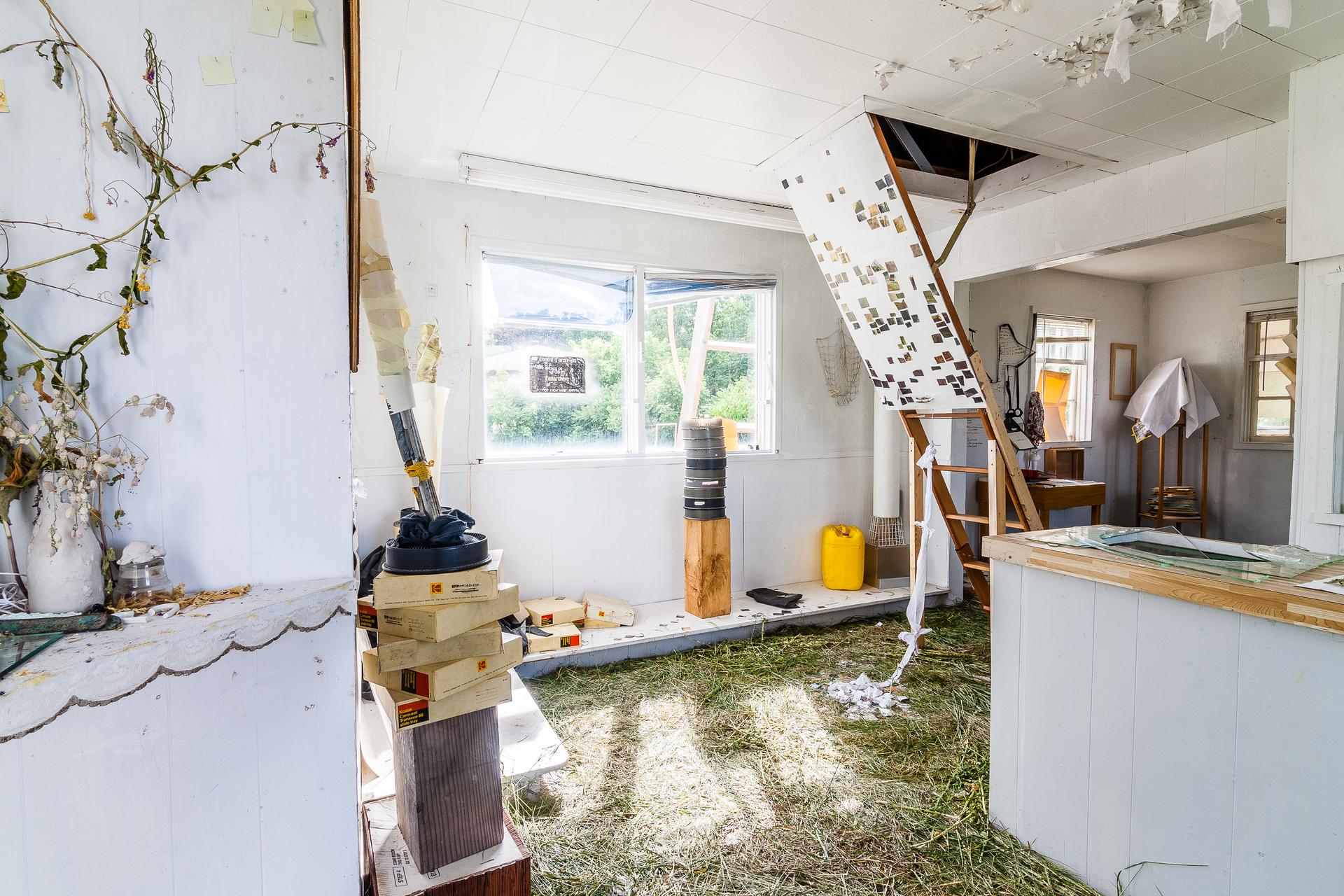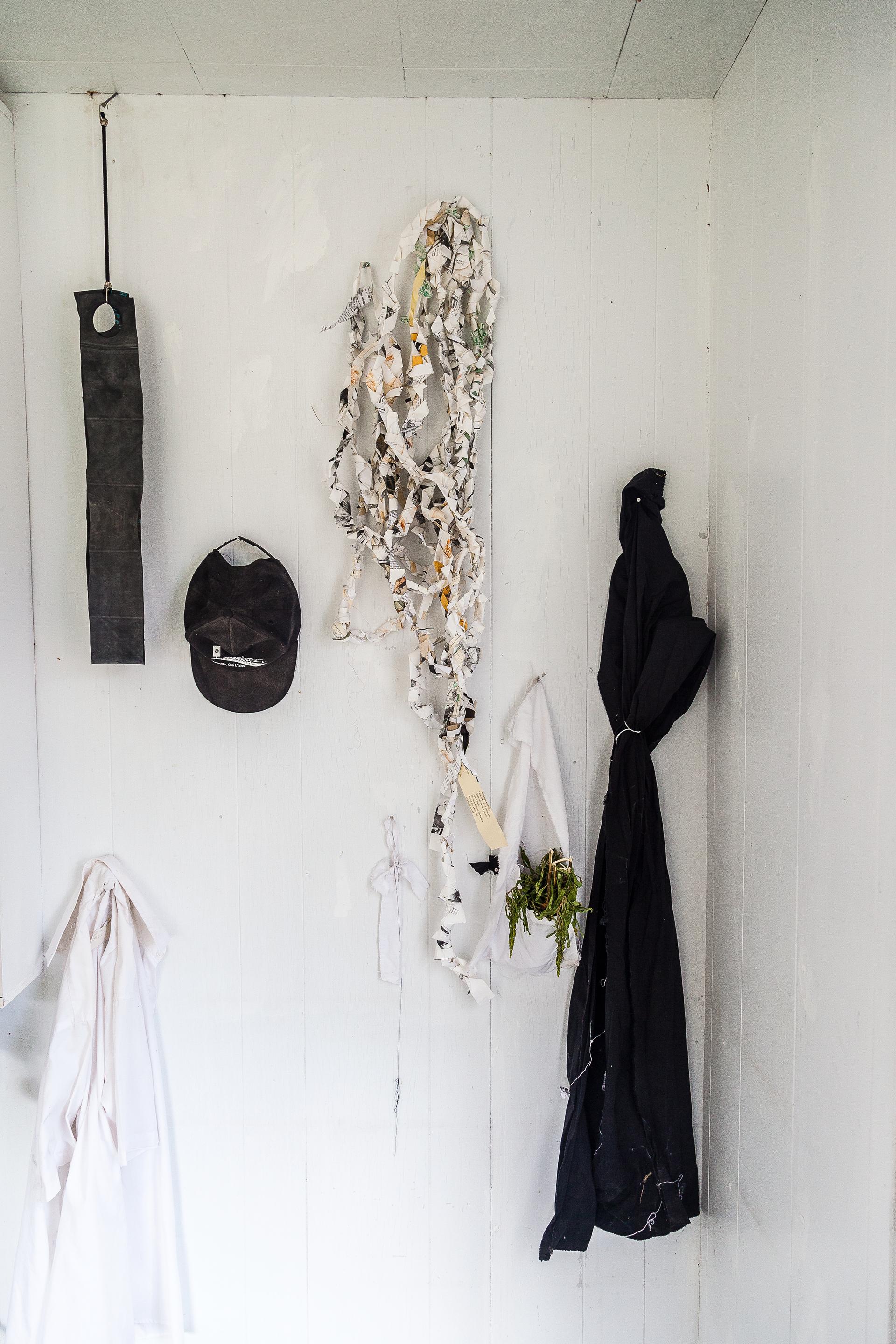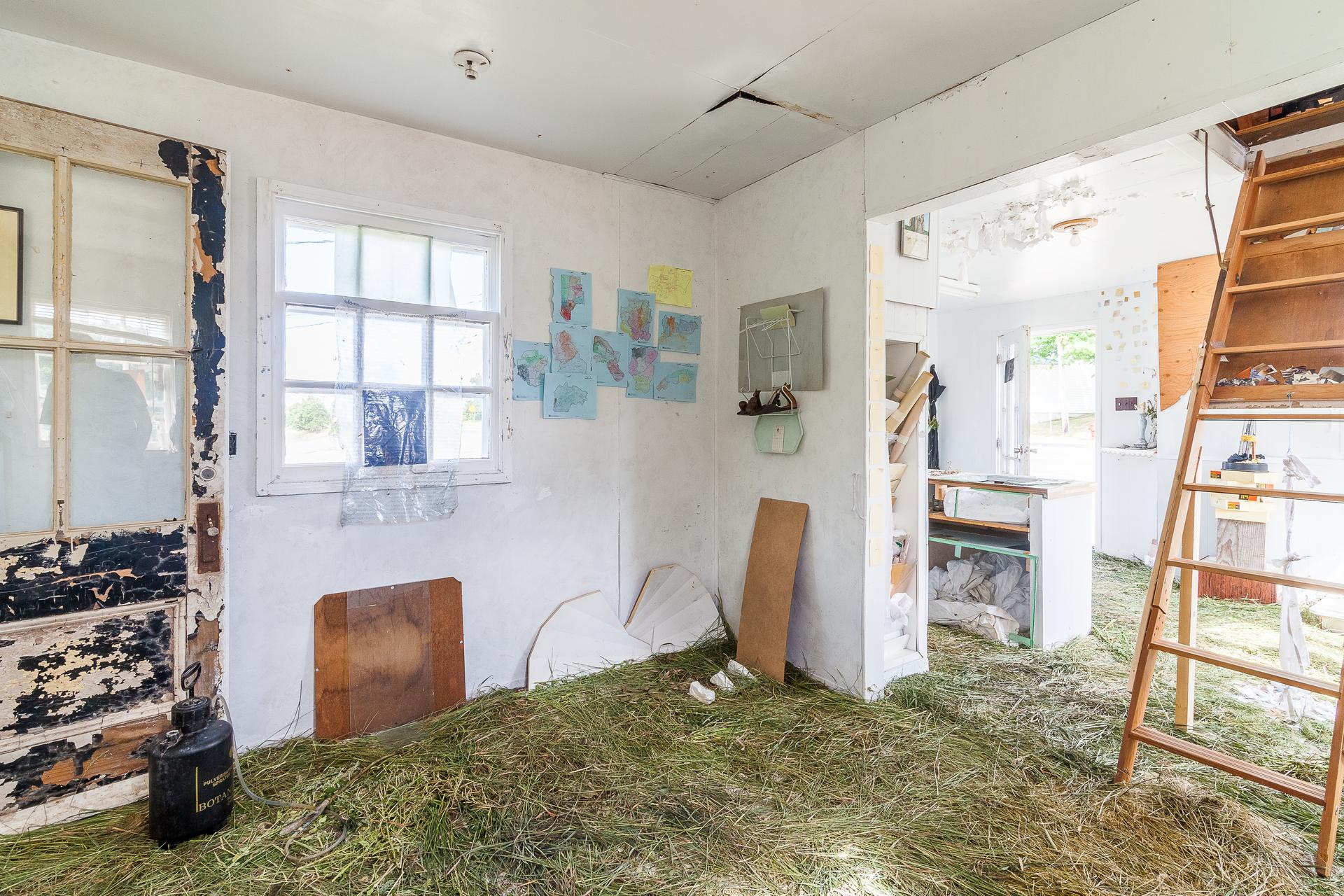
Marie-Claude Gendron
Testimony
Marie-Claude Gendron, from Quebec City, articulated her residency project around the concept of the archive through installation and display. She concentrated on the vestiges of the Est-Nord-Est building, which was demolished in the summer of 2018. In a small house on Avenue de Gaspé, among craft shops and sculpture boutiques, Marie-Claude organized the Centre d’archives [éphémère] de l’archive, an ephemeral archival centre in which the principle of equality reigned. Even though she exercised a degree of discretion by choosing the artefacts, none had any more value than any other. They were selected because they had been abandoned as marginal evidence of an era, and they bore witness to the yearning to preserve everything, to give a second life to fragments of works by artists who had been at Est-Nord-Est in the past.
Among these archives, installations of constructed materials represent nature. For example, in the sink, broken glass emulates water; on the floor is a carpet of hay; on the walls, disparate objects grouped by shape or what they symbolize. In a corner, a pile of books destined for the trash are carefully wrapped. In the organized chaos of the display space, objects diverge from their primary function, like compost converted into a fruit stand or a photographer’s umbrella throwing shade on the corner of a balcony. From this work emanates the desire to let nothing go, combined with that to honour all elements of this memory, such as the old smock sleeves pinned to the wall, imprinted with dust from the wood and metal workshops at Est-Nord-Est.
Another of Marie-Claude’s projects was called Le Chamarrage (Embellishment): a roll of flower-printed fabric found in a nook of Est-Nord-Est was unrolled on Chemin du Moulin, at three different times and under different climatic conditions that influenced her performance. In this way, Marie-Claude intervened in the surroundings, deliberately strewing improbable flowers in the landscape . It was an ephemeral and spontaneous event; the trace left by the tapestry of flowers transported us into a different temporality in which nature took over, as the artwork was buffeted by the wind and softened by humidity. The video, however, remains as a supplementary archive inscribed, with the other artefacts, in the idea of collection and archiving.
Biography
With a multidisciplinary approach incorporating performance art, visual arts, and media art, Marie-Claude Gendron attempts to bring to light the workings of a community that is constantly being updated in the public, private, and intimate spheres. To do this, she takes the position of a provisional ethnographer who shows evidence of the object of her observations through the presentation of a body of artworks. Gendron explores different forms of action poetry and how they are actualized by the body, in writing, and through the formulation of arrangements of objects. Born in Québec City, since 2010 she has participated in residencies, exhibitions, and events in Québec, Canada, Brazil, Mexico, Italy, Northern Ireland, Switzerland, and Thailand.
Discover
Newsletter
Keep up to date with the latest news!
